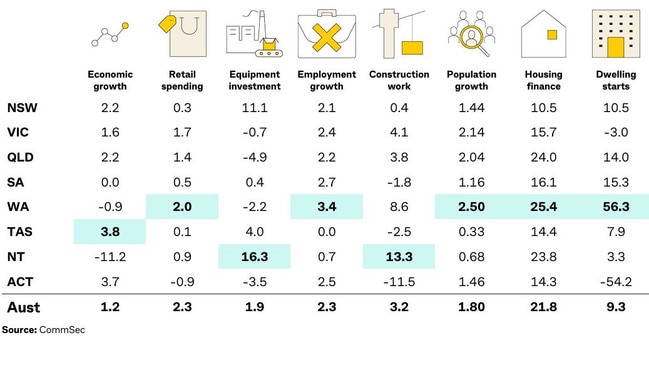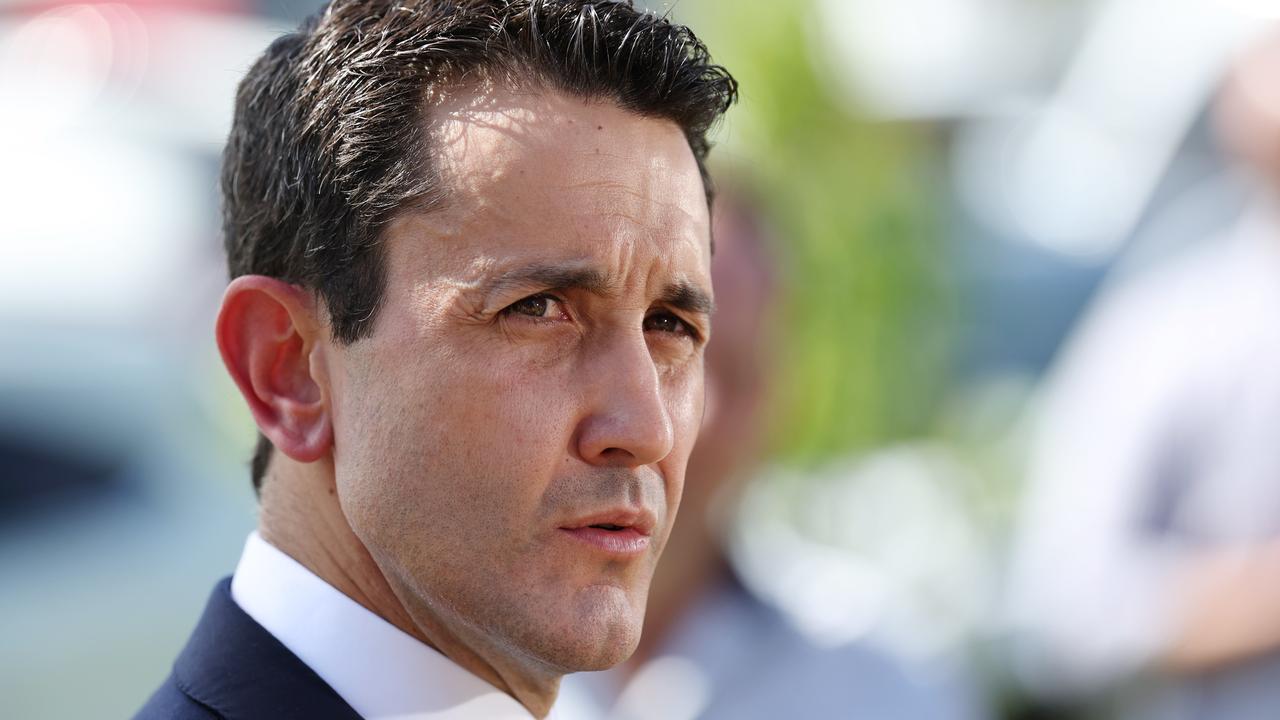Treasurer’s swipe as Qld slips down CommSec rankings
Queensland has slipped from second to third spot in a report that ranks the states and territories on eight key indicators.

QLD Politics
Don't miss out on the headlines from QLD Politics. Followed categories will be added to My News.
Queensland’s economic ranking has slipped as other states surge ahead, new data has revealed.
The latest CommSec report which ranks each state and territory on eight key indicators including economic growth, retail spending, housing and employment, shows improvement for a number of interest rate sensitive states — but the signs are not so positive for the Sunshine State.
Western Australia topped the list for the third straight quarter, on the back of a strong labour and housing market, which is encouraging people to spend.
Queensland has slipped from second to third spot, just ahead of South Australia now in fourth, also dropping from equal second spot.
Queensland Treasurer David Janetzki blamed the former Labor government for Queensland’s decline, saying economic recovery would take time.
Mr Janetzki said the government would improve business confidence by balancing respect for public money and softening cost of living pressures.
“Labor’s fiscal legacy has exposed Queensland to the high likelihood of a credit rating downgrade,” Mr Janetzki said.
“But we already have made key decisions to not proceed with the $36.8bn Pioneer Burdekin Hydro hoax, drive productivity through last week’s referral to the Productivity Commission, and target budget improvement to repair Labor’s damage.”

Overall WA remains No.1, leading five of the eight economic indicators.
Tasmania is steady in fifth place but is joined by NSW, which has also seen a boost post interest rate cuts.
The two territories round out the pack with the ACT remaining seventh and the Northern Territory stays in eighth spot.
However, CommSec concedes the decade-average method of assessing economic performance disadvantages the Top End.
The state is held back by significant LNG construction over 2012–18 inflated a range of economic indicators. So, we also compile rankings of economic momentum — that is, the annual growth rates for the eight indicators.
CommSec chief economist Ryan Felsman said while WA continued to outperform, Victoria had become the “real surprise packet”.
“The reason why it’s lifted is due to benefiting from solid retail spending and inbound overseas migration,” he said.
“But also, when you look at the decade averages, Victoria leads on construction work done, its second on retail spending and third on relative population compared with a decade ago.”
Mr Felsman said the full impact of a rate cut will take some time to flow through the economy it has acted as a stabiliser for state economies, especially in the housing sector.
“The interest rate sensitive cities of Melbourne and Sydney are showing some signs of improvement on the back of that interest rate cut, he said.
The RBA chose to hold the cash rate after its April meeting but is widely expected to reduce interest rates after its May 19-20 meeting.
Mr Feldman said his bank was forecasting potentially three interest rate cuts, taking the official cash rate to 3.35 per cent, which could lift growth for states including Victoria, NSW and the ACT due to being more heavily indebted.
“Of course, that’s been supplemented by solid population growth, and we have seen home prices in Brisbane and also Perth lead the nation, along with Adelaide, in better affordability,” he said.
“They have popped up the weaker states which have been hit by higher interest rates and higher borrowing costs, which are New South Wales, the ACT, Tasmania and also Victoria, so certainly we could see rate cuts support those interest rate sensitive states.”
Originally published as Treasurer’s swipe as Qld slips down CommSec rankings


